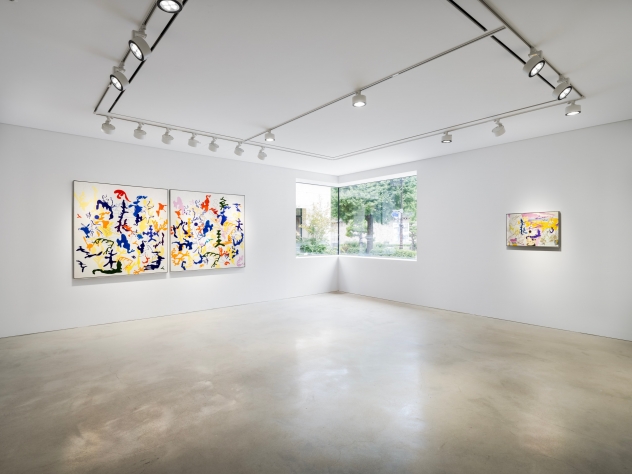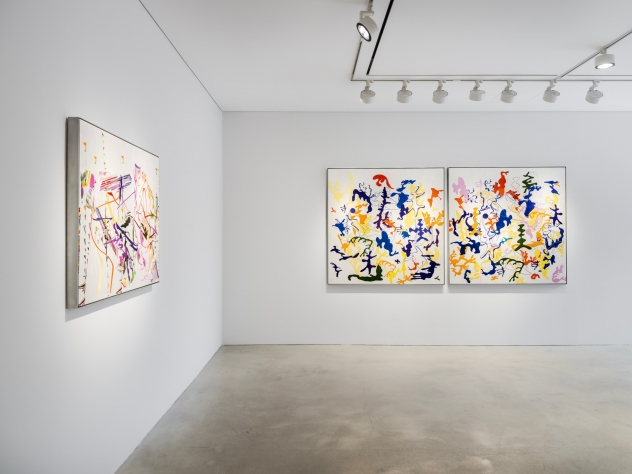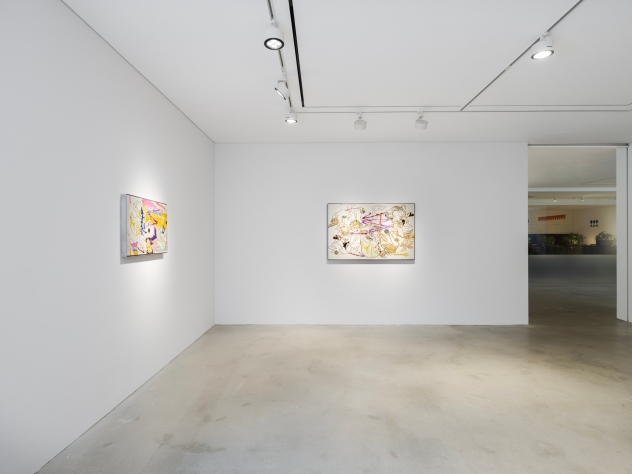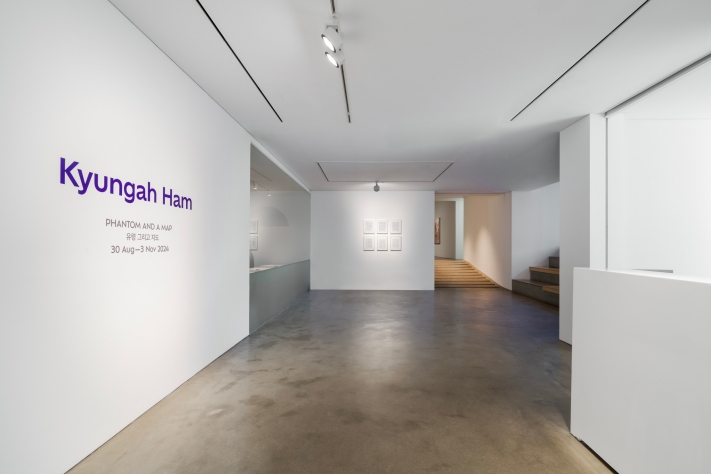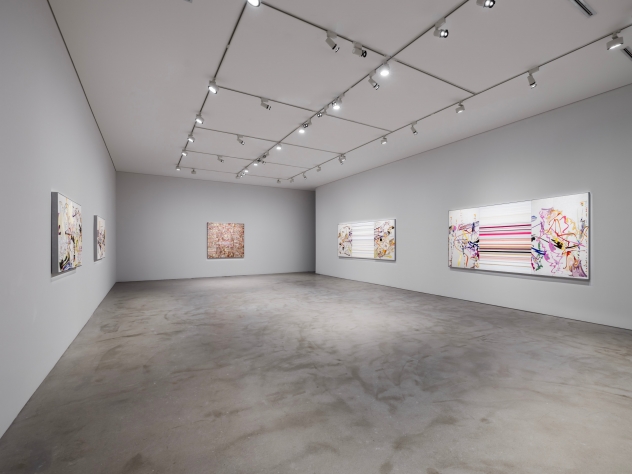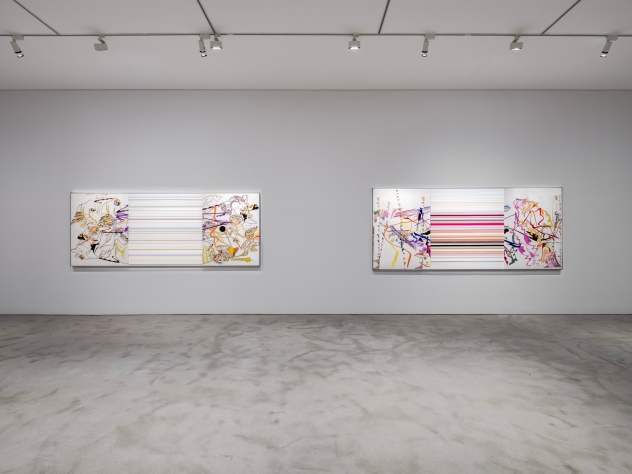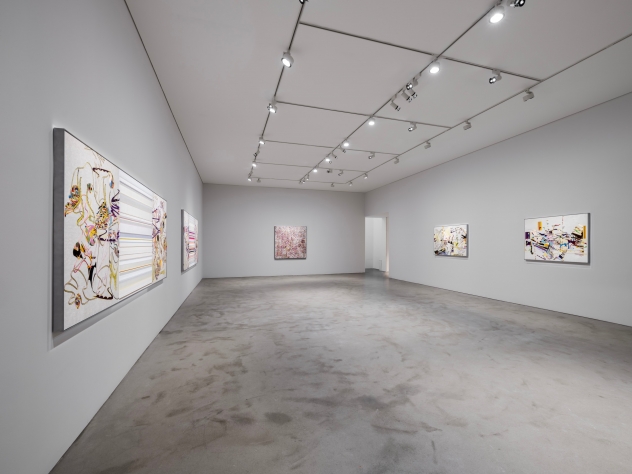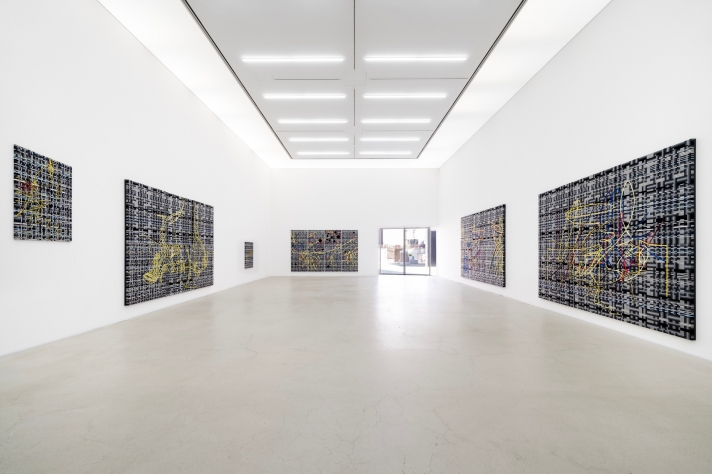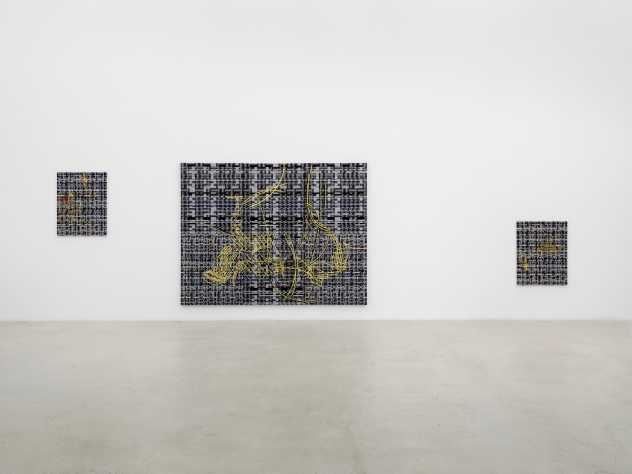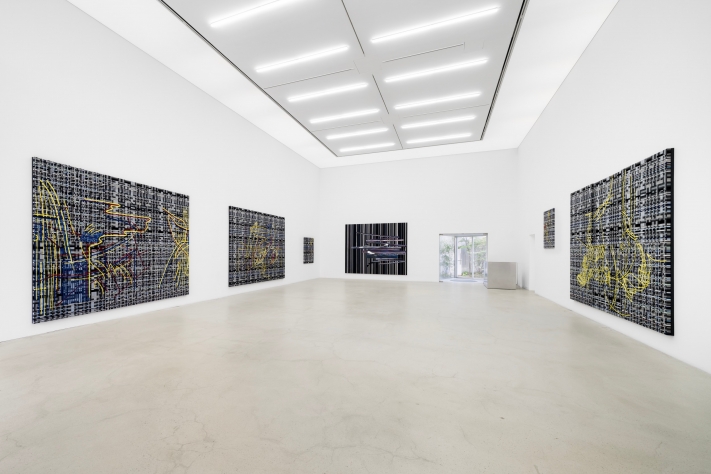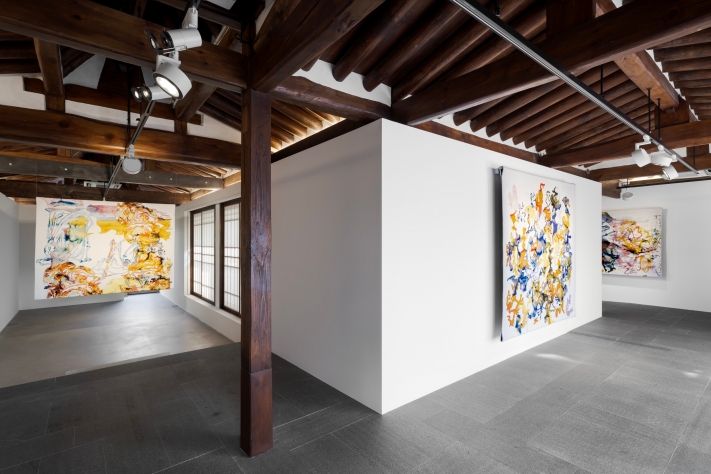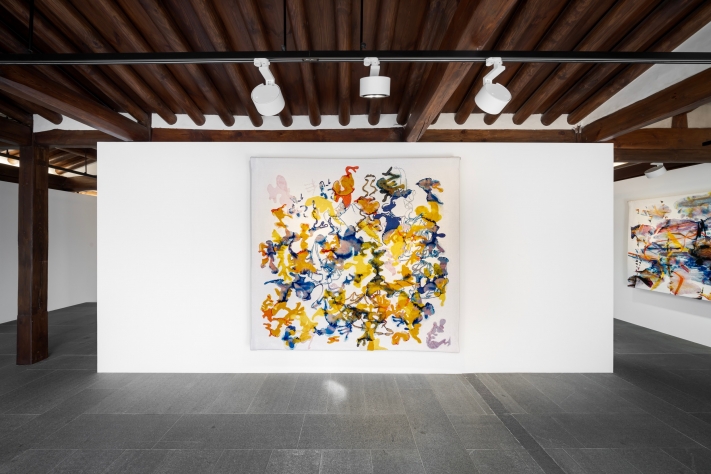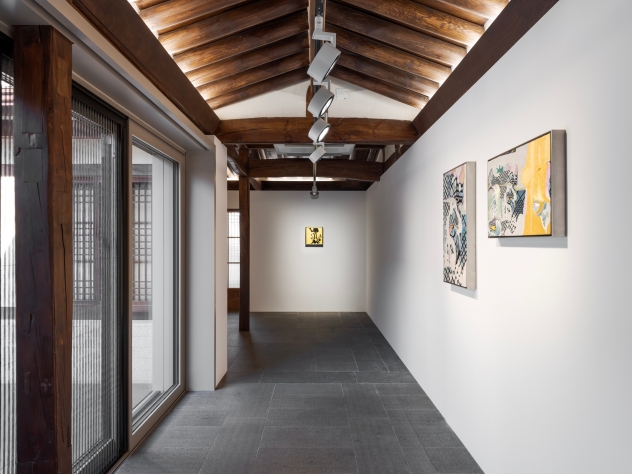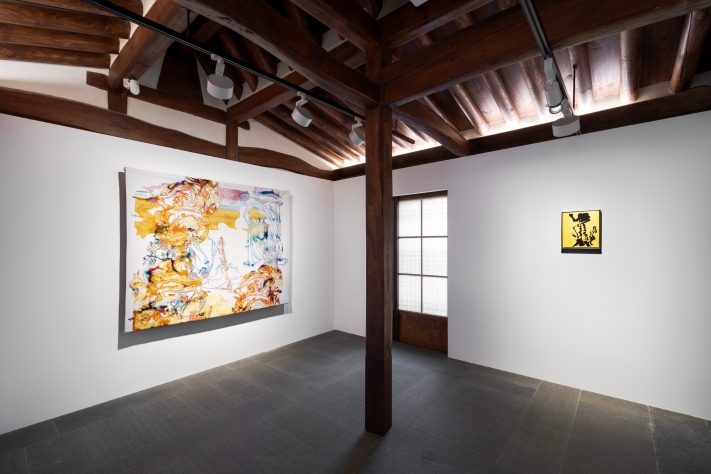Kukje Gallery is pleased to present Phantom and A Map, a solo exhibition by Kyungah Ham from August 30 to November 3 in K1, K3, and Hanok. Organized in three chapters, Ham’s exhibition frames her interpretation of today’s society beginning with the choice of the term “phantom.” A core term embodying Ham’s practice, “phantom” signifies all the invisible cues and connections that power society and constitute the illusion of culture. Following themes Ham explored in her 2015 exhibition with the gallery, Phantom Footsteps, which contemplated the dynamic between the visible and the invisible, Phantom and A Map seeks to present a deeper meditation on the world as it is recorded by these “footsteps”—a map that the artist paints as she constantly moves between the real and the unreal dimensions of this world.
Beginning in K1, Ham has installed work from her iconic Embroidery Project, a series introduced since 2008. Embroidery Project actively embraces various layers of shared sociopolitical memory and meaning—for example, she has translated the mushroom clouds of Hiroshima and Nagasaki into black and white embroidery—while the complex production process she employs also weaves together complex and fraught dimensions of Korean society. As is well known, Ham designs her pieces by first making a sketch, which is then delivered to artisans in North Korea through a secret middleman. After a period of time which cannot be predicted in advance and is steeped in unpredictable circumstances, the finished embroidered work is returned to the artist, once again through a middleman. Most of the time, the initial design comes back in fragmented pieces, each done by a different artisan, after which Ham must combine the fragments into a finished work. This allows the artist to add her own touches as she mounts the fabric onto a canvas frame. Each work acknowledges the hours of manual labor put into the work in the caption. Confronted with the fact that a large embroidery is estimated to have taken 1,400 hours per person, we look anew at the hundreds of thousands of threads that constitute the finished image as well as the manual labor of the anonymous phantom. For the artist, embroidery serves as the most analog means of communication with the people with whom communication is possible not through the physical world, but only the virtual world. Embracing unpredictability is the prerequisite for collaboration with these neighbors who are so close but nevertheless strictly forbidden to contact. With no guarantee that any of the works will be completed, the most fundamental logic for this production, or one certain promise in her production process, is the series of unforeseeable delays as established by the ever-fluctuating political climate between the two Koreas.
K1 presents embroidery works that have completed this fraught journey. Two pieces reminiscent of Henri Matisse are inspired by the late artist’s illustrations for his selection out of Charles Baudelaire’s poetry cycle titled Les Fleurs du Mal, and they share the same title. Just as Matisse had surpassed the temporal gap of eight decades in his referencing of Baudelaire and their common interest in human nature, Ham thinks of Matisse as she paints her landscape of today. Also installed in K1 are works from her representative SMS series, which reproduce Donald Trump’s words speaking about the North Korean leader Kim Jong Un. In boasting his diplomatic record, the former U.S. president referred to his relationship with Kim as a “fantastic relationship,” while at a campaign rally in 2018, he went as far as to declare that “we fell in love.” Aside from a politician uttering romantic words as if he were a poet, the works in K1 genuinely frame poetry as embodying an abstraction of the artist’s sentimental impressions of today’s society.
The abstract language of the embroidery work grouped under the subtitle Poetry in K1 continue on to Hanok, where the works are not only embroidery pieces but also tapestry works produced in collaboration with Magnolia Editions. In these works, formalized compositional gestures coalesce into patterns reminiscent of tears and stains, filling the Hanok space and prompting the audience to engage in a purely optical experience of the painterly woven fabrics.
Ham had described her embroidery production process as: “If the process requires 10,000 steps, I walk 9,999 steps out of the 10,000 with nothing confirmed, with no idea where I am headed, totally unable to predict what will happen.” While one might expect her to have become accustomed to this unique and highly unpredictable process, the recent global pandemic and volatile politics have prolonged the instability in her contact with North Korea. Whereas the middle panel in the triptych Phantom and A Map / Poetry 01WBL01V1T in K1 formalizes the period of waiting through horizontally composed color ribbons, the works in K3 present a more active interpretation of that time. Reminiscent of computer programming or abstract expressionism, the woven net of grids and complex dimensional matrices portrayed in the K3 works is grouped under the title Phantom and A Map / “Did you come by photograph or train?”—a quotation from John Berger’s The Seventh Man, where the author writes the following as he describes photography as a form of transport and an expression of absence: “A friend came to see me in a dream. From far away. And I asked him in the dream, ‘Did you come by photograph or train?’”
The digital world, or the virtual world that we encounter every day, imitates our physical reality, but it exists as an independent entity. In much the same way, the production logic of the Embroidery Project–where the artist seeks an analog communication with those she is not able to meet in real life—has naturally led Ham to be fixated on the relationship between the real and the virtual. Living through the pandemic years, it was only natural that she dove deeper into contemplating the split between communication within the virtual world and that within the real. In contemplating what the true essence of reality is, the artist finds herself facing and championing personal emotions. As we become increasingly distanced from physical reality and become more immersed in the digital world, our emotions exploding amidst the chemistry between disparate stimuli and information sources are becoming even more amplified in a primitive, 'analog' sense. As such, the K3 works, woven with ribbon tapes of various fabrics, are an abstract portrait of today’s world, where two different dimensions and realms continuously collide.
About the Artist
Kyungah Ham explores the impact of social and political dynamics on individuals within the context of contemporary art. While the artist works across painting, installation, video, and performance, Ham is most well-known for her SMS and What you see is the unseen / Chandeliers for Five Cities series, both of which belong to her embroidery project. Characterized by a vivacious splash of color, meticulously crafted surfaces, and visually stunning complexity, these embroidered paintings, in essence, highlight the dynamics between the
conspicuous and the inconspicuous elements that come into play in forming a single image. Through delving into various layers of reality, she seeks to discover a new dimension of communication.
Born in 1966, she received a bachelor's degree at the Seoul National University with a major in painting, later also earning a Master's at the The School of Visual Arts New York City (SVA NYC). Of her major solo exhibitions early in her career are Room with a View (Alternative Space LOOP, Seoul, 1999), Such Game (Ssamzie Space, Seoul, 2008), and Desire & Anesthesia (Art Sonje Center, Seoul, 2009). She has also participated in many projects, including The Shape of Time: Korean Art after 1989 (Philadelphia Museum of Art, 2023, Minneapolis Institute of Art, 2024); Hallyu! The Korean Wave (Victoria and Albert Museum, London, 2023, The Museum of Fine Art, Boston, 2024, The San Francisco Asian Art Museum, 2025); We Do Not Dream Alone—the 1st Asia Society Triennial (Asia Society Museum of Modern and Contemporary Art, New York, 2020); Active Threads (KAI10/ Arthena Foundation, Düsseldorf, 2021); Remaining: New Perspective (UBS Art Gallery, New York, 2020); Examination of a case (Kunstsammlungen Chemnitz, 2020); Paradoxa (Casa Cavazzini, Udine, 2018); Culture City of East Asia 2017 Kyoto: Asia Corridor Contemporary Art Exhibition (Kyoto Art Center & Nijo Castle, 2017); Material Connections (Jane Lombard Gallery, New York, 2017); Korea Artist Prize 2016 (National Museum of Modern and Contemporary Art, Seoul, 2016); Gestures and Archives of the Present, Genealogies of the Future—the 10th Taipei Biennale (Taipei National Museum of Art, 2016); Asia Time—the 1st Asia Biennale and the 5th Guangzhou Triennial (Guangdong Museum of Art, Guangzhou, 2015); Beyond and Between (Leeum Museum of Art, Seoul, 2014), and Hyper Real (Museum Moderner Kunst Stiftung Ludwig Wien, Vienna, 2010).


